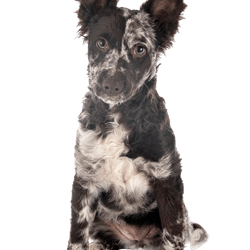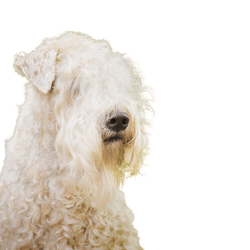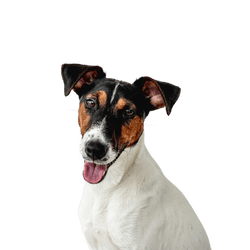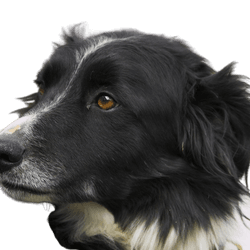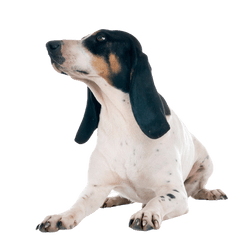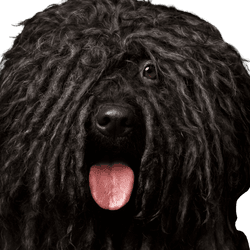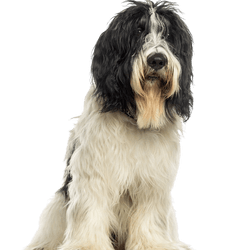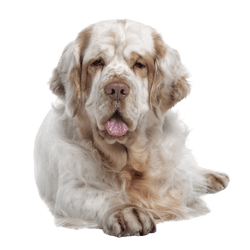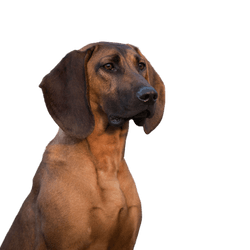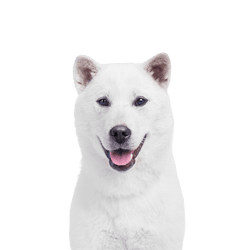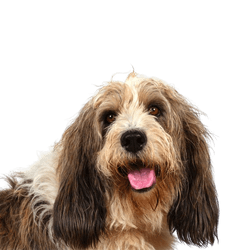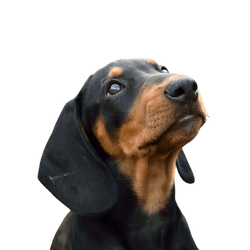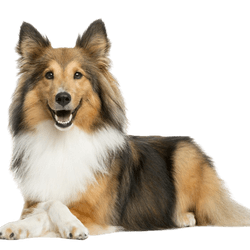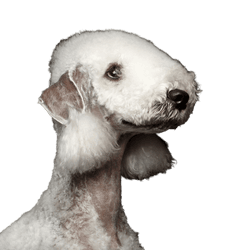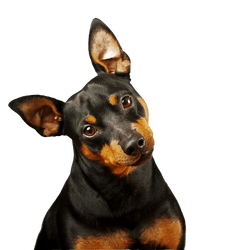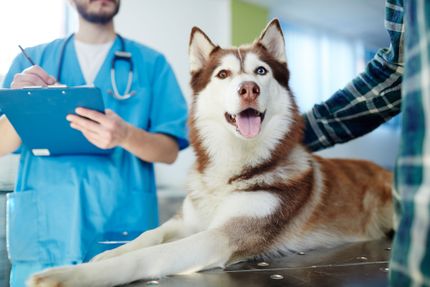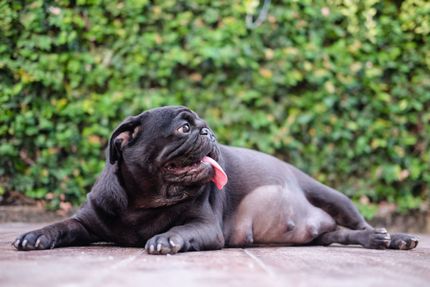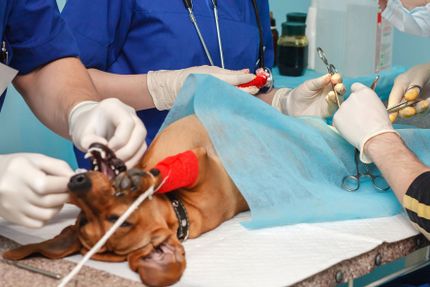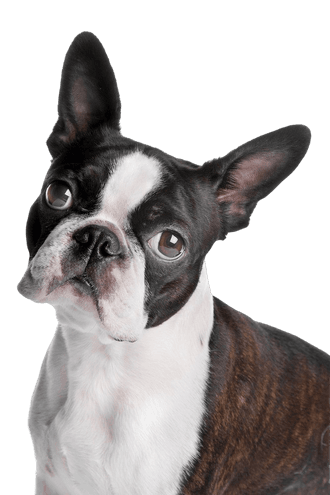
Boston Terrier Breed description: Character & Co
Boston Terrier
Facts & Origin
Origin of the companion dog Boston Terrier
The Boston Terrier belongs to the FCI Group 9 of social and companion dogs, to Section 11 of small Great Dane dogs and carries the standard number 140.
The breed Boston Terrier originates around 1875, when Robert C. Hopper from Boston bought a dog called Judge that was a Bull and Terrier descent from Edward Burnett. Hooper's Judge is directly related to the original bull and terrier breeds of the 19th and early 20th century. The American Kennel Club cites Judge as the ancestor of all true modern Boston Terriers.
Judge weighed about 15 kilos and was crossed with Gyp. Gyp was a white female bulldog owned by Mr Edward Burnett of Southboro. She weighed about 20 pounds, was stocky and strong and had the typical blocky head that characterises the Boston Terriers of today. The resulting puppy formed the foundation, and over the years that followed breeders refined the breed. The Boston Terrier cross originally weighed up to 20 kilograms, but over the years the weight has fallen below 15 kilograms and then into the range between 6 to 12 kilograms. It is one of the few breeds that have their origin in the United States. The Boston Terrier was the first non-sporting dog breed in the USA.
Breed characteristics Boston Terrier
The Boston Terrier may have been bred to be a wild fighter, but you definitely don't notice that anymore today. The dogs are known for their charm and liveliness and are extremely intelligent. Their active, affectionate nature makes them extremely lovable. They are still considered to be brave and alert, without a tendency to hunt or stray, which makes letting them off the leash relatively easy. This gives the Boston Terrier all the qualities to become a great addition to your family.
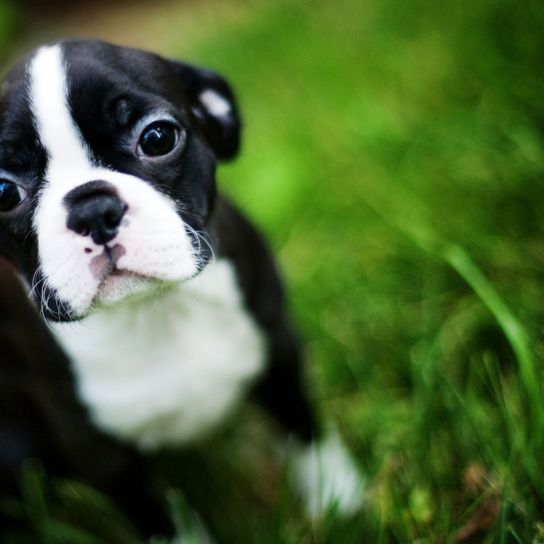

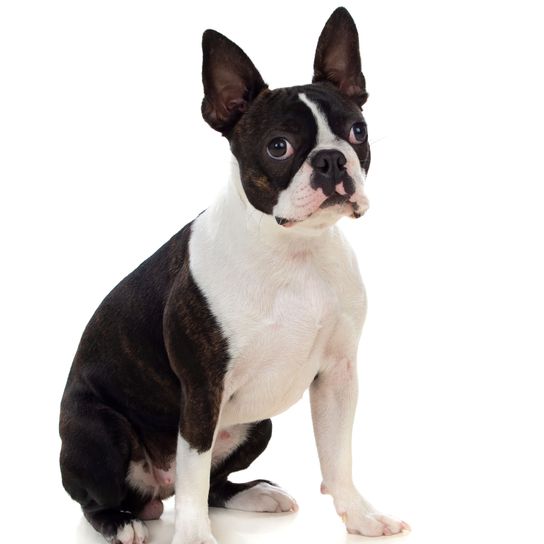
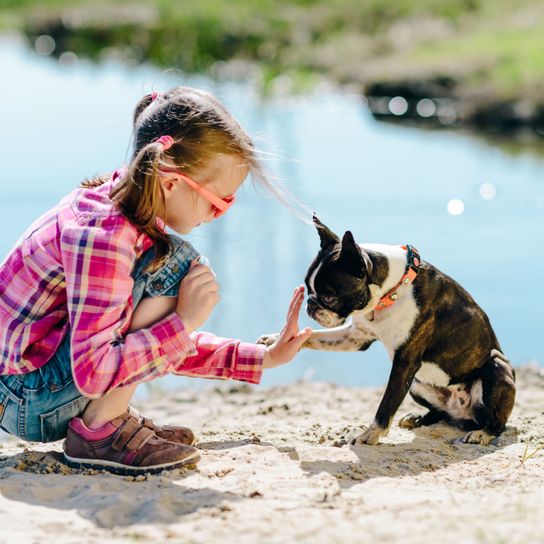
| Alternate Name | - |
| Origin | USA |
| Life expectancy | 10 - 15 years |
| Care requirements | low-maintenance |
| Activity level | average |
| FCI group | Small Molossian type Dogs |
| AKC group | non-sporting group |
| KC group | utility group |
Boston Terrier mixes
Attitude, character and temperament of the breed
The lively character
The small size and the lively, affectionate nature of the Boston Terrier make him a popular family dog and companion. They amuse people of all ages with their antics, their appealing, unique expressions, and they love children. They are considered to be an especially good fit for people that live in apartments as well as for older people.
Otherwise, the Boston Terrier enjoys long walks and wants to have its high intelligence encouraged and challenged. If an adequate run is guaranteed, it can easily be kept in a small city apartment. They get along very well with other pets, conspecifics and children in most cases.
Character
Usage
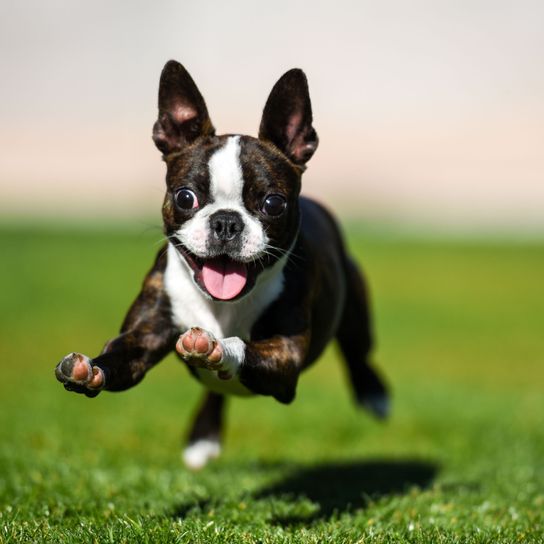
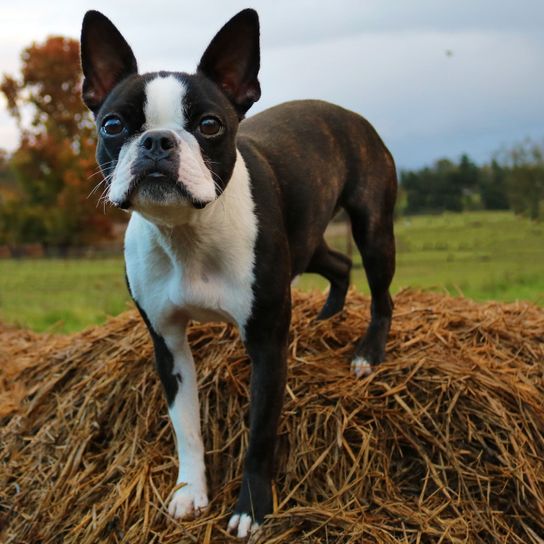

Health and breeding information
Typical diseases of the Boston Terrier
The Boston Terrier is one of these breeds of dog breeds where breeding has led to rather negative results. The trend goes towards breeding their noses shorter and shorter as well as achieving an increasingly round head. This leads to the dog having problems regulating its body temperature and not being able to breathe freely. The diet is also kept relatively simple. From time to time the dog tends to have allergies that require dietary restrictions. However, this occurs rather rarely.
Furthermore, the Boston Terrier has a number of hereditary and breeding related diseases such as
- eye and
- spinal diseases and
- patella problems.
- Also the breeding of special colours has an effect on the health of the dog, because this is caused by crossing in defect genes.
Buying a Boston Terrier
When buying a Boston Terrier puppy, you should be careful not to buy from a breeder whose dogs may have won championships but have been bred excessively to a achieve a small nose or an overly rounded face, as this can cause severe health problems, especially in later life, as just described. A good Boston Terrier breeder keeps the dog as close as possible to the original breed. Find out more about this breed in the Boston Terrier Forum and about the advantages and disadvantages of its character. There you can exchange information easily.


Appearance of the Terrier
Although Boston Terriers tend to be considered a smaller dog, they are very muscular and robust. They have a shiny and smooth coat with clear white markings. The pattern resembles that of a tuxedo, which is why they were given the name American Gentleman. The ears, which are characteristic for a Boston Terrier, are quite large and naturally stand upright.
Boston Terriers have a flat-nosed, broad face without wrinkles. They belong to a class of dogs called Brachycephalic (Brachy means short, Cephalic means head). As in other brachycephalic dogs, the lower jaw is characteristically large in relation to the rest of the body, but the upper jaw is relatively short, giving them a sort of "depressed" look in their face.
Due to their straight, upright posture, the Boston Terrier has a natural presence that goes beyond their size. They are characterised by a broad chest and a boxy, robust appearance. Their tail is naturally relatively short.
The required coat care of the Boston Terrier is very low maintenance. It is sufficient to brush their coat once a week and check the dog's eyes and ears. There must be a possibility for the dog to cool itself down in the apartment, because the Boston Terrier is relatively sensitive to heat.
What is the average size of a Boston Terrier?
The Boston Terrier has a small and compact body and usually grows to a height of 36 to 42 cm.
How much does a Boston Terrier weigh?
Boston Terriers are divided into three weight classes:
- light: under 6.8 kilograms
- medium: 6.8 - 9 kilograms
- heavy: 9 - 11.3 kilograms
What is the life expectancy of a Boston Terrier?
The Boston Terrier has an average life expectancy of 9 to 15 years depending on the breed.
| Fur length | short |
| Fur | flat coated |
| Ear shape | Standing Ears |
| Tail | stubby |
| Anatomy | muscular |
| Size ♀ | 38 - 44 cm |
| Weight ♀ | 7 - 10 kg |
| Size ♂ | 38 - 43 cm |
| Weight ♂ | 8 - 11 kg |
| Suitable For | Children |
Colors


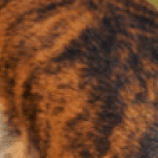
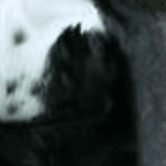



Known Diseases
Eye diseases
Often occur with allergies and intolerances.
Patellar problems
Problems with the Patellar can be a displacement or weak kneecap, which is one of the most common causes of lameness in dogs, also because of overweight.
Shortness of breath
Difficult breathing can be recognized by the dog's rattling and sometimes accelerated breathing rate.
Spinal disorders
However, as the dog ages, this elasticity can be lost and completely inhibited by diseases such as spondylosis.
FAQ
-
No, the Boston Terrier is a family dog and is not considered dangerous. Therefore, it does not count as a fighting dog and is not on any list.
-
The Boston Terrier is one of the torture breeds, because he has a shortened muzzle (flat nose) and as a short-headed breed often suffers from brachycephaly.
-
A Boston Terrier from a serious and good breeding with papers costs over 2500 Euro.
Other medium dogs
Useful Articles
You can find articles that might interest you in the dogbible blog to match your favorite breed.
Visit our magazineto stay up to date on dog trends.
To find out more, view our Privacy Policy
Find here the breed that suits you and find out what character traits it has. Here you can also learn more about the origin, size and weight of your favorite breeds.
Matching your favorite breed, you'll find articles that might interest you on the dogbible dog blog.
Apps for dog owners - these 10 apps you should know about
What is a clicker and what does it do for dog training?





